Hi all,
You can find on the link below mostly all the presentations given during the 2nd CubeSat Projects Workshop 2017.
Link to the talks: Here
UnivEarthS Student NanoSatellite Project
Hi all,
You can find on the link below mostly all the presentations given during the 2nd CubeSat Projects Workshop 2017.
Link to the talks: Here
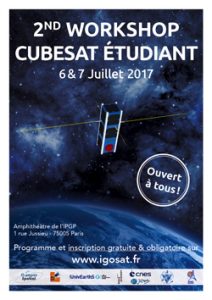 We are pleased to announce the opening of registration for 2nd CubeSat Workshop student, to be held on 6 and 7 July at the Institut de Physique du Globe de Paris. The first edition in 2016 was a great success, and we wished to renew this enriching experience.
We are pleased to announce the opening of registration for 2nd CubeSat Workshop student, to be held on 6 and 7 July at the Institut de Physique du Globe de Paris. The first edition in 2016 was a great success, and we wished to renew this enriching experience.
This workshop aims to gather for 2 days the members of the student Cubesat community, to share their experience and progress. Experts from major laboratories and space domain institutions will be present to provide knowledge and support for these projects. Talk sessions ar scheduled for the afternoons, to offer the best possible place for discussions among participants. A convivial evening on a houseboat is organized on Thursday evening to create informal discussions in a good mood.
Registration is free but mandatory: thanks to register and fulfill this form.
If you have a specific topic in mind, a problem you met, an experience you want to share, or anything else related to a workshop session theme, thank you specify on the form at registration.
Finally, feel free to pass the information around you, the event is open to all!
The workshop is financed by Campus Spatial, organised by IGOSat and the Labex UnivEarthS. It is supported by the Université Paris Diderot, the CNES, the programme Janus, the APC laboratory and the IPGP.
Preliminary Programme : 2nd Student Cubesat Workshop Program
Address
IPGP, 1 rue Jussieu, 75005 Paris
Social event
Thursday at 19h30
Barge du CROUS De Paris
Port de la Gare, Quai François Mauriac 75013 Paris
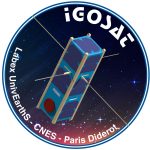
Hana Benhizia is recruited by Labex UnivEarthS as project manager on the IGOSat student nanosatellite project, starting October 1, 2016. She joins Hubert Halloin team in the APC laboratory and succeeds Marco Agnan, to whom we wish a good continuation.
Hana Benhizia is a graduate of the Ecole d’Ingénieur Denis Diderot (EIDD) as a system engineer and a master’s degree in Astronomy and Space (OSAE) at Paris Diderot University. Her field of activity is the engineering of space systems and the management of space projects.
As IGOSat project manager, she will be in charge of the realization and operations of the nanosatellite, and of the success of its educational and scientific objectives.
> See the Hana Benhizia page on the Labex UnivEarthS website.
The National Academy Press has published the book “Achieving Science with CubeSats: Thinking Inside the Box”. This book, a veritable mine of information for all the people working on the CubeSats, is downloadable free on their site.
You can read the summary below & download the PDF for free :
Space-based observations have transformed our understanding of Earth, its environment, the solar system and the universe at large. During past decades, driven by increasingly advanced science questions, space observatories have become more sophisticated and more complex, with costs often growing to billions of dollars. Although these kinds of ever-more-sophisticated missions will continue into the future, small satellites, ranging in mass between 500 kg to 0.1 kg, are gaining momentum as an additional means to address targeted science questions in a rapid, and possibly more affordable, manner. Within the category of small satellites, CubeSats have emerged as a space-platform defined in terms of (10 cm x 10 cm x 10 cm)- sized cubic units of approximately 1.3 kg each called “U’s.” Historically, CubeSats were developed as training projects to expose students to the challenges of real-world engineering practices and system design. Yet, their use has rapidly spread within academia, industry, and government agencies both nationally and internationally.
In particular, CubeSats have caught the attention of parts of the U.S. space science community, which sees this platform, despite its inherent constraints, as a way to affordably access space and perform unique measurements of scientific value. The first science results from such CubeSats have only recently become available; however, questions remain regarding the scientific potential and technological promise of CubeSats in the future.
Achieving Science with CubeSats reviews the current state of the scientific potential and technological promise of CubeSats. This report focuses on the platform’s promise to obtain high- priority science data, as defined in recent decadal surveys in astronomy and astrophysics, Earth science and applications from space, planetary science, and solar and space physics (heliophysics); the science priorities identified in the 2014 NASA Science Plan; and the potential for CubeSats to advance biology and microgravity research. It provides a list of sample science goals for CubeSats, many of which address targeted science, often in coordination with other spacecraft, or use “sacrificial,” or high-risk, orbits that lead to the demise of the satellite after critical data have been collected. Other goals relate to the use of CubeSats as constellations or swarms deploying tens to hundreds of CubeSats that function as one distributed array of measurements.
Références :
National Academies of Sciences, Engineering, and Medicine. Achieving Science with CubeSats: Thinking Inside the Box. Washington, DC: The National Academies Press, 2016. doi:10.17226/23503.
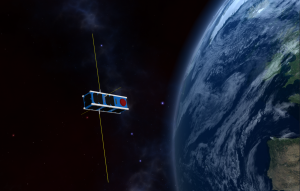
The IGOSAT Preliminary Definition Review was held on June 8, 2016 at the Paris Diderot University and now allows the project to officially enter phase C of its development.
As a reminder, the objective of the review was to present a reference definition of products meeting the requirements of the STB system. It confirms the technical and calendar feasibility of the system components (satellite, instruments, ground segment) and ensures that the identified risks are known and mastered. Finally, it verifies that the products meet the STB system.
In the context of JANUS, it allows the project team to take stock of development and benefit from the advice and external vision of CNES stakeholders and the JANUS community. Finally, when it was able to respond effectively to the aforementioned objectives, this review is an essential element in the implementation of the partnership agreement between CNES and the Paris Diderot University.
The review group consisted of the following:
The review group highlighted the considerable work done in the development of IGOSat. This is all the more remarkable in the context of JANUS, where the turnover between the students on the projects is regular and important. This phenomenon is unfortunately well known for university nanosatellites, where it is necessary to remain vigilant on the transmission of information at the beginning and at the end of missions.
In conclusion, the review group highlighted the good progress of IGOSat and expressed its confidence in the progress of the project. A positive opinion was given as to its continuation, thus enabling it to enter phase C of its development.
Read the document of the IGOSAT preliminary definition review (in French).
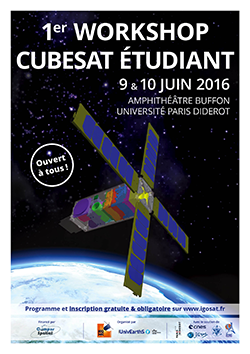
On 9 and 10 June 2016, the Paris Diderot University hosted the 1st Cubesat Student Workshop at the national level. Organized by the Paris Diderot Space Campus, the IGOSat project and the Labex UnivEarthS, this event brought together about one hundred people around the exciting topic of nanosatellites built by the students.
Students and staff presented the numerous projects under development: QB50, Picsat, Igosat, Eyesat, Circus, Nanomagsat, Ionoglov, Meteor, OGMS-SA, ISAE Cubesats and CSUG. They attended conferences on the tools or missions held by space experts and were able to compare their ideas with those of the CNES (National Center for Space Studies), the APC (Astroparticle and Cosmology) laboratory, IPGP (Institute of Physics of the Globe of Paris), EIDD (École d’Ingénieur Paris Diderot), and guests of the EPFL (Ecole Polytechnique Fédérale de Lausanne).
The afternoon workshop sessions allowed open discussions so that students could ask all their questions on technical subjects related to the projects: telecommunications, instrumentation, SCAO, flight software … These exchange times were particularly interesting, because they have raised the technical problems that often arise in the different projects. A convivial evening organized on Thursday extended informally the discussions initiated during the day and established links between the participants.
The first feedbacks on the workshop were very positive and show that the Cubesat students cause a great interest, on which exchanges are essential to progress. The students believe that this is a great opportunity for them to participate in these projects, because they have a concrete and rewarding experience, to be valued later when looking for a job. These two days of exchange have allowed them to clarify technical points, discover new horizons, and will help to make the best possible progress of student nanosatellites projects.
Thanks to the video studio of Paris Diderot University, all the lectures and discussions were filmed. Find below the complete playlist of the 2 workshop days.
Realisation : Romain Bouiges – Production : Pôle Evénementiel Paris Diderot
The presentations are organized in the order of the workshop schedule:
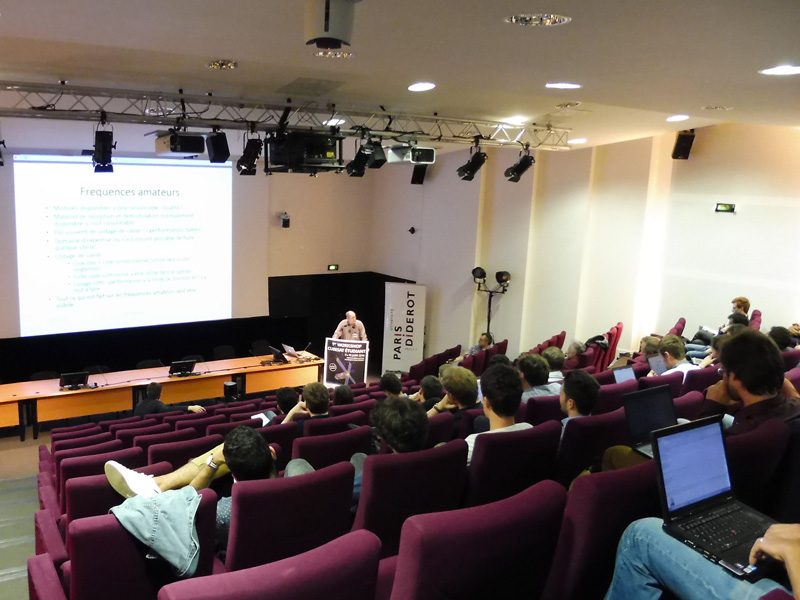
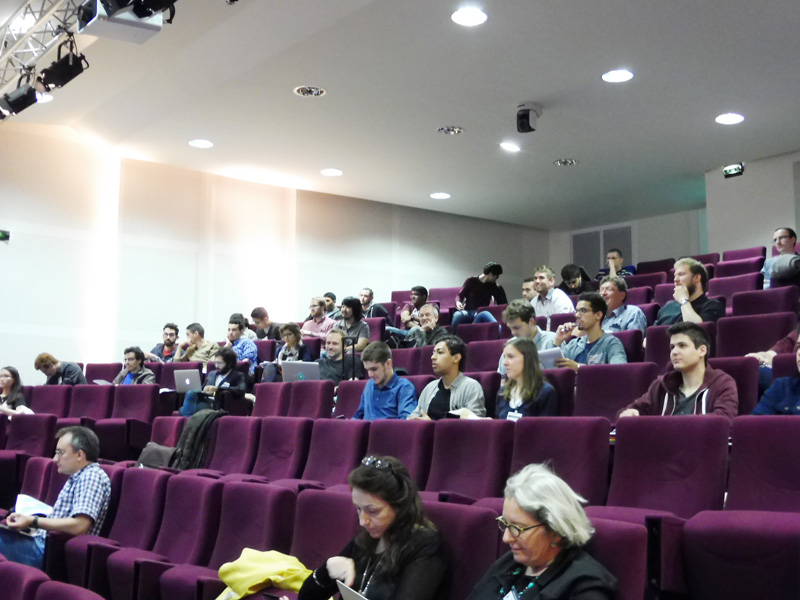
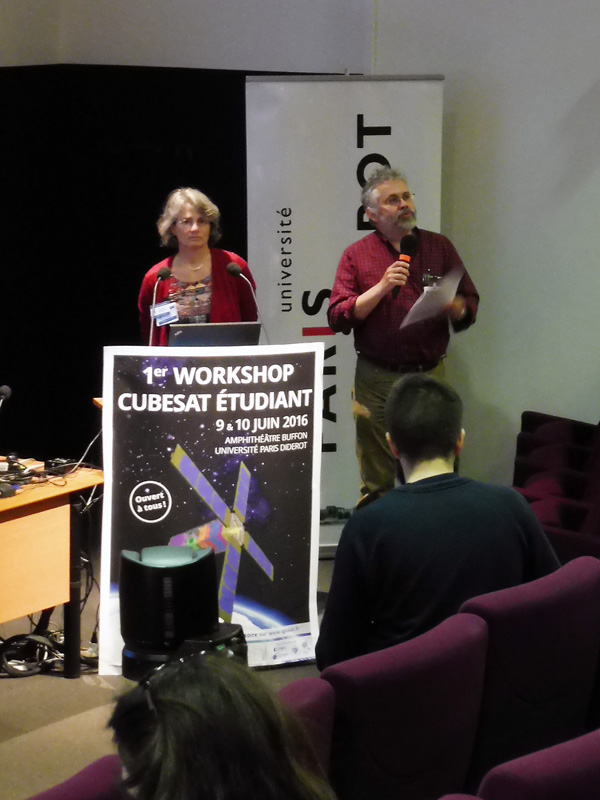
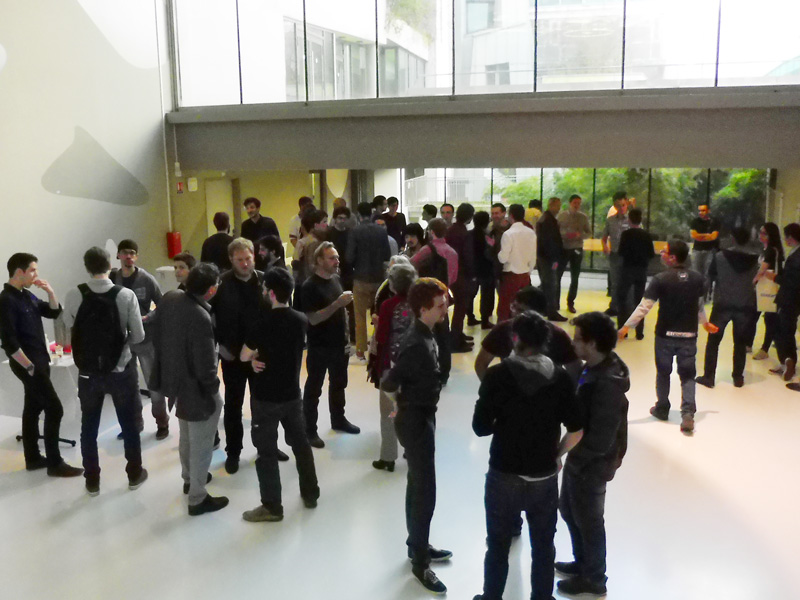
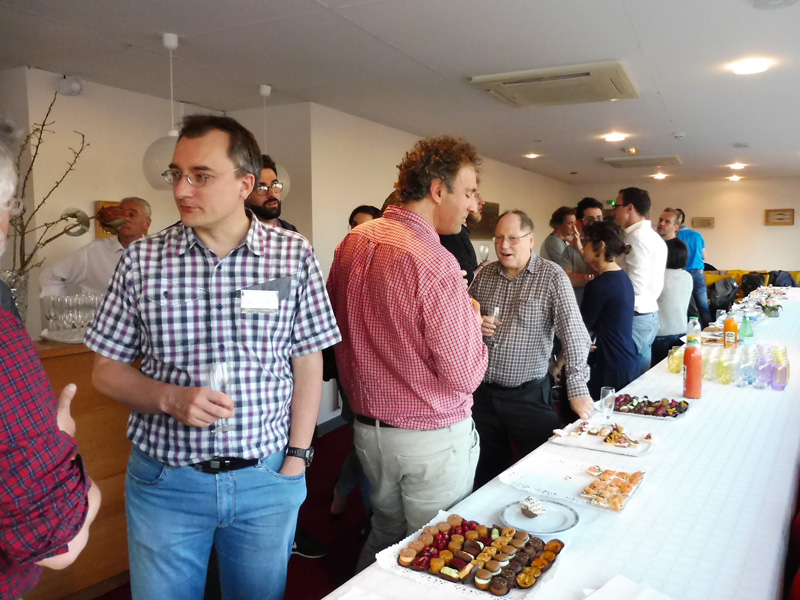
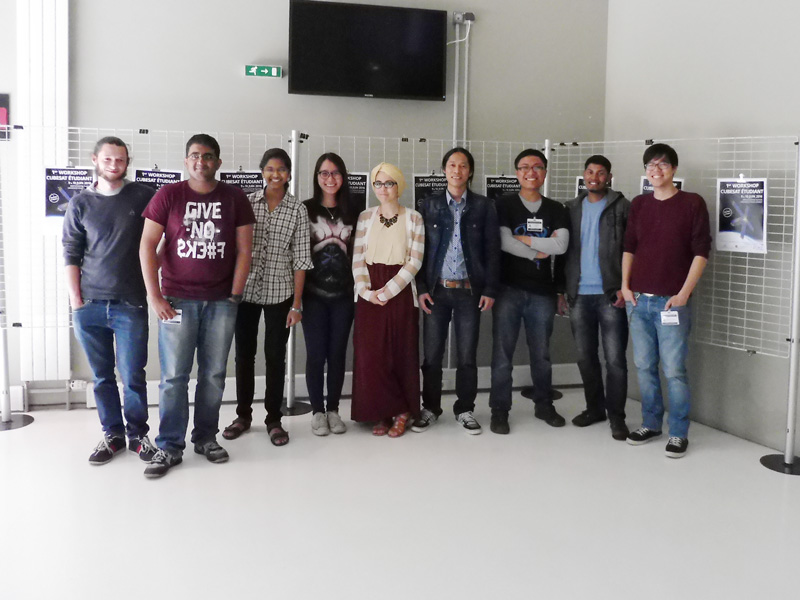
The Paris Diderot University devotes a series of reports to the IGOSAT project. Presentation of the project, interview of supervisors and students, you will be able to learn more about the nano-satellite thanks to the newsletter of the university and the articles that will appear.
You can find the first article by clicking on this link:
Les nano-satellites à l’assaut de l’espace

IGOSAT team on June 2016
Communicating with a satellite in orbit around the Earth is simple … on paper. In practice, it is important to prepare well in advance, and of course to get all the necessary authorizations.
In order to ensure optimum use of radio waves in France, the National Agency of Frequencies (ANFR) is responsible for regulating Radiofrequency broadcasts on the territory. To do this, it supervises authorizations with the help of certifications for individuals and clubs.
In the framework of the IGOSat project, the radio club UnivEarthS was created to guarantee legal support for future telecommunications between the nanosatellite and the ground station in Paris. A test phase with satellites already in orbit will be carried out this year, in order to prepare operations for launch in 2018.
If successful, this station can be used in other missions in the future … Let’s cross fingers!
This summer was marked by the installation of the ground station of the IGOSat project, on the roof of the building where the work room is located. The student Pierre Vermot (from the Bachelor of Physics at the University) has actively participated in the completion of this installation, via the preparation of antennas, wiring, amplification and computer installation.
We will now do realistic data reception tests, working with a CubeSat already in flight and using the same configuration as IGOSat. In the long term, a second ground station will also be installed at the University of Hanoi in Vietnam.